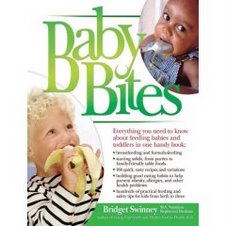What is Enterobacter sakazakii and where is it found?
Enterobacter sakazakii, also called E. sakazakii, is a type of bacteria most recently associated with the use of powdered infant formula in hospital neonatal units and the subsequent death of some premature infants. The bacteria is also found in the gut of humans and animals and the environment.
Who is at risk for the infection?
According to the US FDA, "premature infants and those with underlying medical conditions are at highest risk for developing E. sakazakii infection."(1) Several outbreaks of the infection have occurred in neonatal intensive care units worldwide. There is compelling evidence that the use of powdered infant formula had served as the source of the infection.
How could powdered infant formula contain bacteria?
According to the World Health Association, "Powdered infant formula is not a sterile product--even when manufactured to meet current hygiene standards. This means that it may occasionally contain pathogens that can cause serious illness."(2)
Bacteria can enter a food during processing in 2 ways--through the raw material the food is made from and through contamination through other means. A food can also be contaminated with bacteria when the food is prepared for eating--in this case, when the powdered formula is reconstituted with water. Bacteria can enter the formula through dirty water, a dirty bottle or nipple or dirty hands. Small amounts of bacteria can grow to larger amounts that can cause illness when held at room temperature too long.
What can be done to prevent an infection from E. sakazakii?
- Breastfeeding is the best way to feed babies--especially those that are premature or have medical problems. (No cases of E. sakzakii have ever been associated with breastfeeding!) Even if breastfeeding needs to be done by a tube or eye dropper at first with milk that is pumped, the baby still gets all the hundreds of nutrients and immune building components of the breast milk. Also, ANY amount of breast milk is helpful in building the immune systems of infants--even if it is just for a few weeks or months.
- If breastfeeding is not possible, premature infants, low birth weight infants and those with medical issues should not be given powdered infant formula. Instead they should be given formula that is available in liquid form.
- If circumstances don't allow the use of liquid formula, certain preparation practices can help reduce the risk of illness from E. sakazakii and other food borne illnesss. Keep in mind that the following preparation method should be used for infants that are at higher risk of infection--premature, low birth weight, immunocompromised infants--especially those under 2 months of age. Ask your doctor about formula preparation steps that are right for your baby.
- These safe food handling practices, summarized from the World Health Organization can also help decrease the risk of any type of food borne illness: They can be found at: www.who.int/foodsafety/publications/micro/pif2007/en/
- Wash hands with soap and water and dry.
- Wash bottles, nipples and bottle rings with hot soapy water and use a brush to remove dried milk from bottle and nipple.
- Sterilize bottle by covering with water and bringing to a rolling boil. Turn off heat and leave pan covered until equipment is needed.
- Clean and disinfect surface to prepare formula. Wash hand with soap and water and dry with clean or disposable cloth.
- Boil some safe water. Add hot water (no cooler than 158 degrees F or 70 degrees C) to bottle and add correct amount of powdered formula.
- Immediately cool bottle to feeding temperature by running cool water over it or by putting in a container of ice water. To avoid contaminating the bottle, make sure the cooling water is below the lid of the bottle.
- Dry the outside of the bottle with a clean or disposable cloth.
- Check the temperature of the formula by dripping a little on the inside of your wrist. It should feel lukewarm, not hot.
- Feed the baby.
- Discard any formula that the baby did not drink within two hours.
FOR MORE INFORMATION ABOUT BREASTFEEDING, SEE:
www.womenshealth.gov/breastfeeding/inc
(1) Health Professionals Letter on Enterobacter sakazakii Infections Associated with Use of Powdered (Dry) Infant Formulas in Neonatal Intensive Care Units. Food and Drug Administration. Center for Food Safety and Applied Nutrition. October 2002. www. cfsan.fda.gov/~dms/inf-ltr3.html
(2) Safe preparation, storage and handling of powdered infant formula-Guidelines. World Health Organization 2007. www.who.int/foodsafety/publications/micro/pif2007/en/





1 comment:
Really nice blog. Full of baby information.
Anjelina
[http://www.realbabyguide.com]
Post a Comment